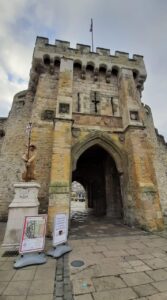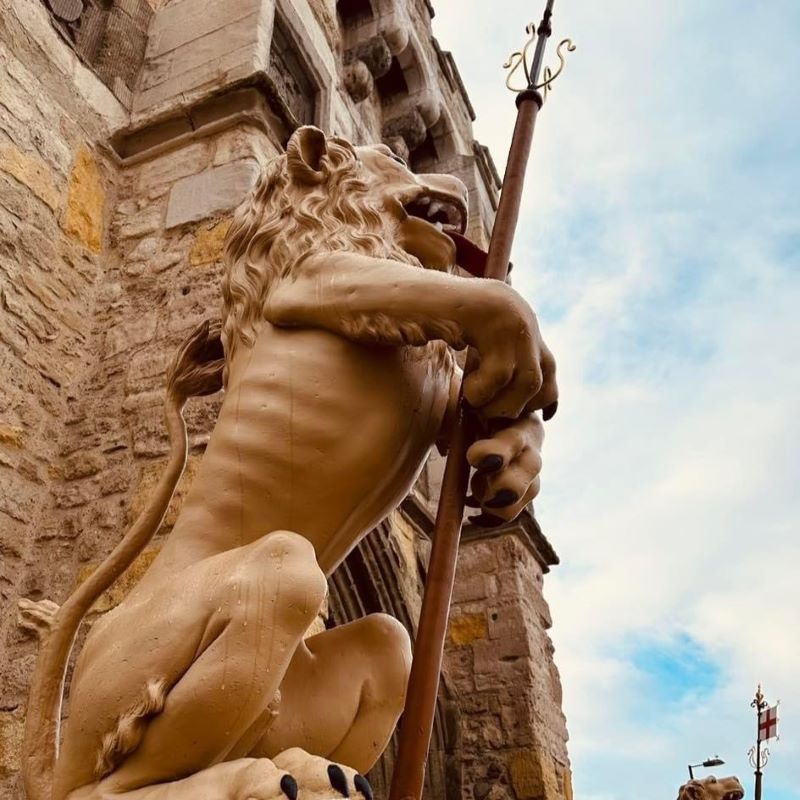Do you know your streets in Southampton?
Where do you think Southampton’s High Street is?
Many would assume that the precinct area around the entrance to Westquay, with its large shops,is the High Street.
In fact, the area from the Bargate down to Town Quay is named the High Street, as it was once the centre of commercial activity. It has a series of pavement plaques from the Bargate to Town Quay that tell some of the city’s history.
Some will refer to this as Below Bar, though that name is not formally adopted. To add to the confusion ,old maps name this High Street as English Street, as the Anglo Saxons were pushed east after the Norman invasion.
We still have a nearby French Street near the medieval West Quay where Norman merchant families once lived. It is south of today’s Westquay shopping centre which has adopted the historic name.

The precinct in front of the Bargate only dates from August 1971. Worried that people would start public speaking in it, the council built a Speakers Corner platform opposite the former Debenhams store on the corner of Hoglands park.
Above Bar Street runs north from the Bargate.
In 2011 the council put up red signs all the way along Above Bar and Below Bar, and designated the whole stretch as the QE2 Mile. The ship left its home port of Southampton for the last time in 2008. One of its anchors can be found outside Holy Rood.
Another possible name confusion occurs with similar sounding Weston Shore and the former Western Bay. The bay and its shoreline once came lapping up to the Western Walls of the Old Town. However, from 1927-1934 the Western Bay was reclaimed to create the New Docks. Much of the original old docks, dating from 1837, have been repurposed as Ocean Village.
Bitterne has a distinct identity and its own Bitterne Local History Society (BLHS), with its own shop. Bitterne Manor was where the Romans set up a camp – at what was called Clausentum. Vespasian Road there recalls the Roman Emperor who died in 79 AD.
Bitterne Park Triangle has its distinctive Sayers Clock Tower which was once in Above Bar Street until 1935. The Bitterne Park area was built by the National Liberal Land Company. They wanted a teetotal estate with any pubs only on its boundary.
St. Denys has a remnant wall from its former Priory in a Priory Road back garden. The Priory was established in 1124 by King Henry 1 whose son had been drowned in an English Channel crossing.
St. Denys Church was built in 1868. However, there is another, older, St. Denys Church in Old Chilworth village.
Shirley has Shirley Road which runs from Four Post Hill to where Lidl is today. The road then becomes Shirley High Street, until it becomes Romsey Road north of Shirley Precinct. There are also the Upper Shirley and Shirley Warren areas.
Millbrook has Millbrook Point Road, once a popular beach spot for locals before the creation of the new docks.
The suburb of Freemantle is on the west of the city, but Freemantle Common is on the east.
Further afield we have Totton and Totton West, which is on the old settlement of Hangere. It was mentioned in the Domesday Book of 1086 and is now recalled by the Hanger Farm Arts Centre.
We also have West End, confusingly on the eastern border of Southampton. On the west side of Southampton there is an East End near Beaulieu. John Illsley, former bass player for Dire Straits now owns the local Turfcutters pub.
Between Southampton and Romsey is North Baddesley but South Baddesley is some 20 miles away in the New Forest.
To add to the name confusion, Sotonians still use names of places, such as Stag Gates where the Avenue meets Lodge Road – they were demolished in 1919!
- In Common is not for profit. We rely on donations from readers to keep the site running. Could you help to support us for as little as 25p a week? Please help us to carry on offering independent grass roots media. Visit: https://www.patreon.com/incommonsoton

